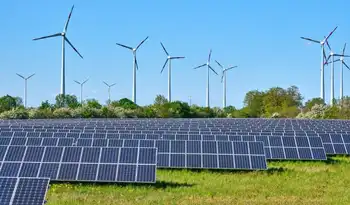Monitoring your heat and air, via the Internet
Yet despite the gloomy state of the global economy, Stuart Lombard believes his tiny Toronto company, Ecobee Inc., will attract customers who are interested in the green — both the environmental kind as well as the monetary variety.
And it all starts with a simple thermostat. The centrepiece of Mr. Lombard's sprouting green strategy is the Ecobee smart thermostat — a technological upgrade to traditional programmable heating and air conditioning controls — which is equipped with a touch-sensitive digital display that allows users to easily program and control the climate inside their homes and businesses.
What makes the Ecobee thermostat "smart" is not merely the technology that allows users to program the device to raise or lower temperatures at various times of day — so that the house cools off during the day in the winter months, warming at night when everyone comes home from work — or in response to certain weather conditions, but also the features that enable the homeowner to make those changes remotely over the Internet.
Although the chief executive officer of Ecobee admits shaky economic conditions have taken their toll on his startup, the company is playing up both the energy- and cost-saving benefits of the device; users in the company's beta test program noticed monthly energy savings of between 15 per cent and 25 per cent, translating to a similar decrease in monthly utility bills, Mr. Lombard says.
"In a down economy, people are looking to energy conservation as a place where they can cut costs and save money, and our product definitely provides that for them," he says. "We're still seeing an awful lot of interest."
The plan is to extend the technology to mobile devices so that users can change their thermostat settings using an iPhone or BlackBerry.
Ecobee has about 60 heating and cooling contractors throughout North America who are selling the device and the company has topped its first-quarter sales targets in the first four weeks of availability. Property developer Minto Group Inc. is showcasing the thermostat in its "ecohome" near Ottawa, while Menkes Developments and Thomasfield Homes Ltd. have each included the Ecobee device in model homes in the Greater Toronto Area.
Still, with Canadian housing starts falling by more than 12 per cent in February, according to Canada Mortgage and Housing Corp., some of Ecobee's customers have reduced their initial orders for new thermostats as construction across the country slows.
"It has had an impact," Mr. Lombard says of the economic slowdown. "But on the other hand, we're new and our numbers are fairly small so we're sheltered a bit because we have a very new product with very small number targets in terms of market share. If this persists for three or four years, it could have a big impact on us, but I think this year we're reasonably shielded and probably next year, too. Now we just have to hope things get better."
The ability to remotely control the temperature inside a building via the Ecobee thermostat, using software that runs on a laptop, has garnered unanticipated attention from the business community, a pleasant surprise for the company, whose primary focus had been residential customers.
"We're getting quite a bit of interest from that light-commercial space and the response from people who have seen it is phenomenal," Mr. Lombard says. "We haven't been marketing it there, but what's really interesting for us is that you get the product out there and then people find new uses for it. Frankly it was something we hadn't thought too much about, but having said that we're getting a really good response."
A dozen Staples Inc. outlets are already using the technology and Ecobee is fielding calls from other chains that are looking to upgrade their thermostats and are intrigued by the ideas of being able to control the climate in their outlets from a central location; as well, businesses have the ability to calculate energy use per square foot and see how different offices or stores are performing in their energy conservation efforts.
"This whole concept of being able to manage your various locations — whether that be store locations, franchise locations or restaurant locations — from a single central point, it saves you a truck roll," Mr. Lombard says. "When somebody says that something is broken [with the heating or cooling], or that they're uncomfortable, you don't have to send someone out there to fix it. So the cost savings on the commercial side are a lot faster...."
While economic conditions are undeniably bleak, Mr. Lombard said he is encouraged by how the political climate is changing in favour of green technology. In the United States, President Barack Obama has pledged billions of dollars for green technology research and spending, while closer to home, Ontario Premier Dalton McGuinty's government recently introduced a Green Energy Act designed to promote job creation in green innovation sectors.
"Politically, it is clearly front and centre," Mr. Lombard says. If you look at the Obama administration or Premier McGuinty, green and green tech jobs are clearly front and centre. On the business side, you're just looking at more aggressive paybacks — 'what is the payback — what is my ROI?' I think people are sharpening their pencils on that side and one of the great things about energy efficiency is that the paybacks are very short, the paybacks on our product are less than a year, which makes that procurement cycle significantly easier."
Related News

Six key trends that shaped Europe's electricity markets in 2020
LONDON - According to the Market Observatory for Energy DG Energy report, the COVID-19 pandemic and favorable weather conditions are the two key drivers of the trends experienced within the European electricity market in 2020. However, the two drivers were exceptional or seasonal.
The key trends within Europe’s electricity market include:
1. Decrease in power sector’s carbon emissions
As a result of the increase in renewables generation and decrease in fossil-fueled power generation in 2020, the power sector was able to reduce its carbon footprint by 14% in 2020. The decrease in the sector’s carbon footprint in 2020 is similar to trends…





